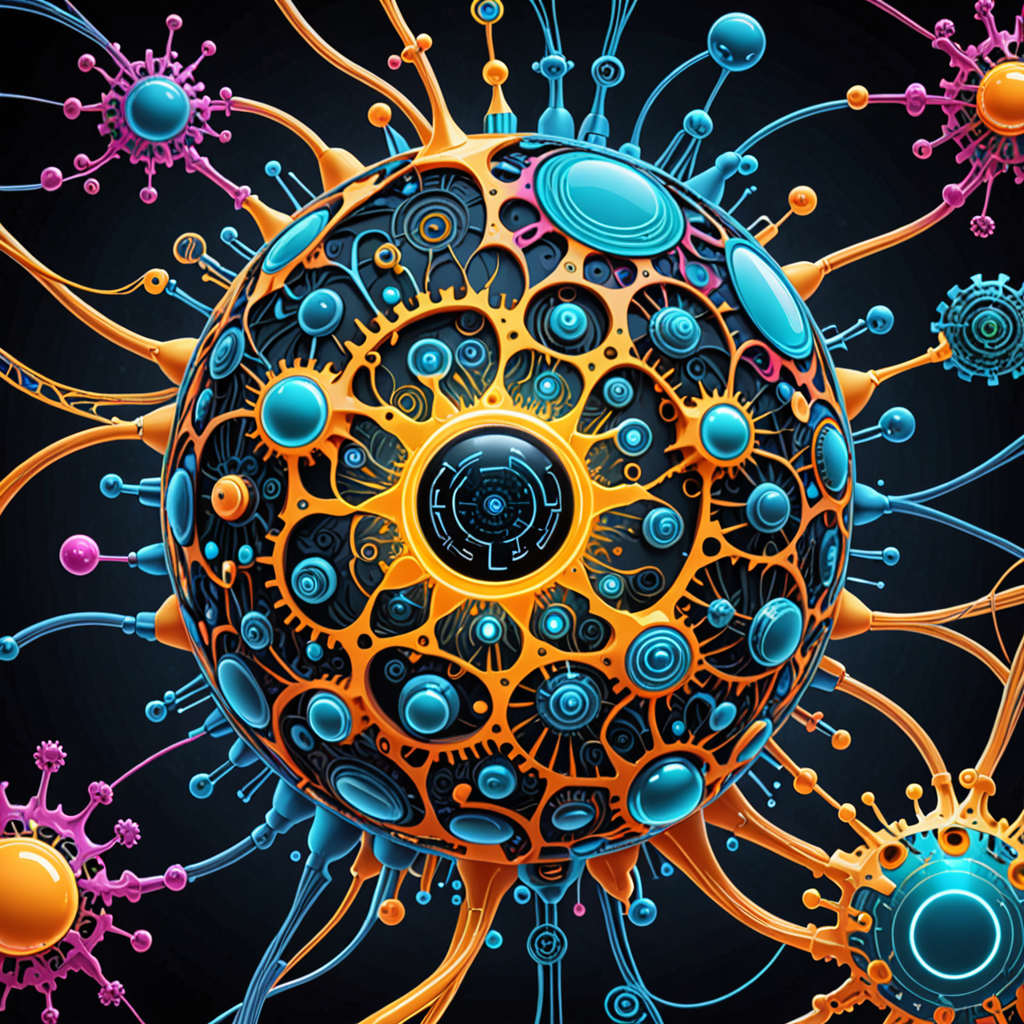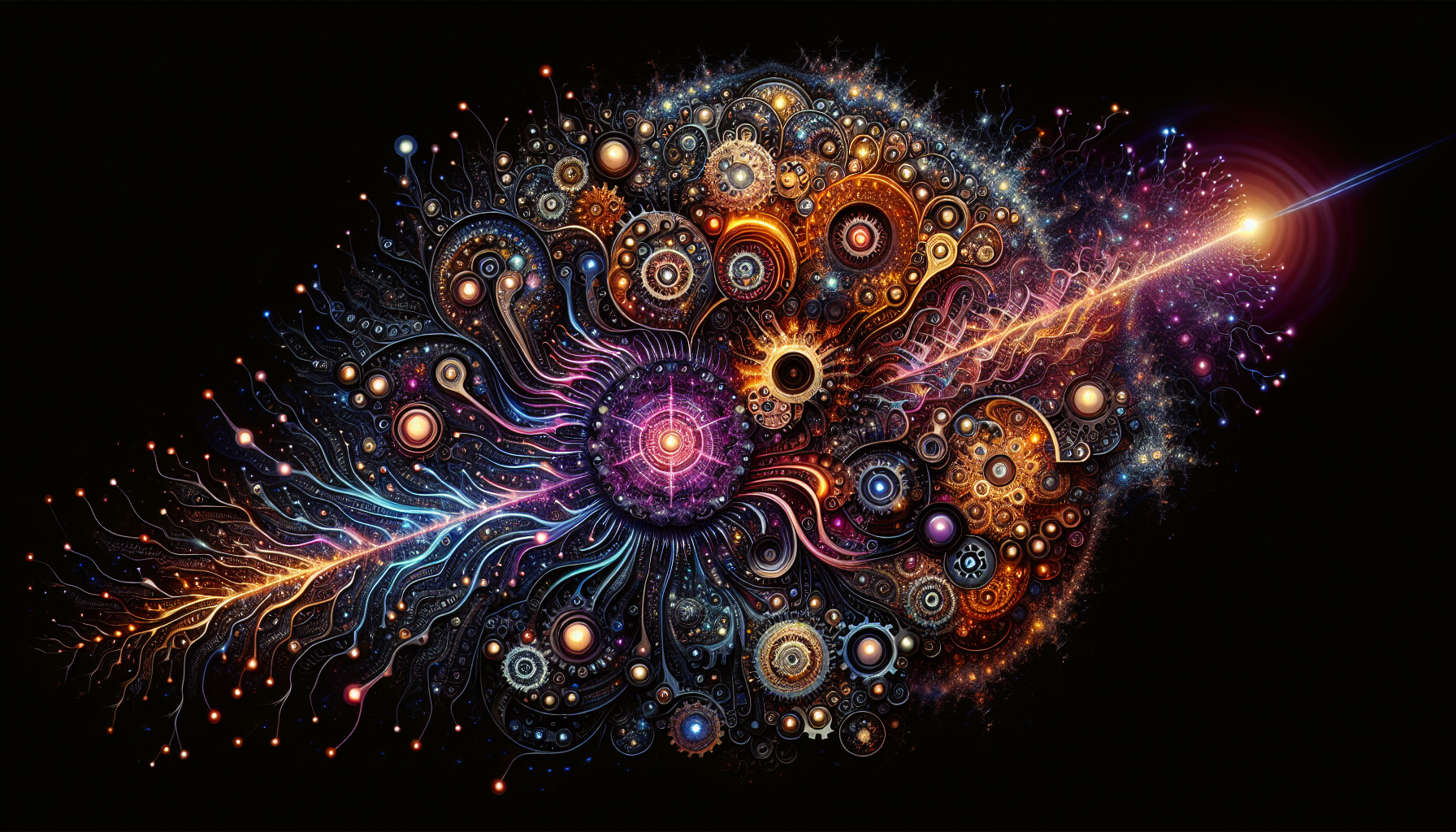In today’s digital landscape, machine learning chatbots are revolutionizing the way businesses interact with their customers. This comprehensive guide will delve into the intricate relationship between chatbots and machine learning, exploring how machine learning for chatbots enhances user experience and operational efficiency. We will begin by examining the fundamental role of machine learning in chatbots, highlighting its benefits and applications. Next, we will clarify the distinctions between AI and machine learning, specifically addressing the capabilities of ChatGPT within this context. As we progress, you will discover a step-by-step approach to creating a chatbot with machine learning, including essential tools and practical coding examples using machine learning chatbot Python. Furthermore, we will evaluate the best algorithms for chatbot performance and discuss the significance of deep learning in chatbot development. By the end of this article, you will be equipped with the knowledge to harness the power of machine learning chatbots effectively, ensuring your business stays ahead in the competitive market.
Understanding the Role of Machine Learning in Chatbots
Machine learning (ML) plays a pivotal role in enhancing the functionality and effectiveness of chatbots. By integrating machine learning for chatbots, we can significantly improve user interactions and streamline communication processes. Here are key ways in which ML is utilized in chatbots:
Overview of Machine Learning for Chatbots
1. Natural Language Processing (NLP): ML algorithms enable chatbots to understand and interpret human language more effectively. By employing NLP techniques, chatbots can analyze user inputs, discern intent, and extract relevant information, leading to more accurate responses.
2. Contextual Understanding: Machine learning allows chatbots to maintain context over conversations. By leveraging historical interaction data, chatbots can remember user preferences and previous queries, enabling them to provide personalized and contextually relevant responses.
3. Personalization: Through ML, chatbots can analyze user behavior and preferences to tailor interactions. This personalization enhances user experience by offering recommendations and solutions that align with individual needs, thereby increasing engagement and satisfaction.
4. Sentiment Analysis: ML techniques can be employed to gauge user sentiment based on their language and tone. This allows chatbots to adjust their responses accordingly, fostering a more empathetic interaction and improving user satisfaction.
5. Continuous Learning: Chatbots equipped with ML capabilities can learn from each interaction. This continuous learning process enables them to improve their responses over time, adapting to new language patterns and user preferences.
6. Integration with Platforms: For instance, Messenger Bots utilize machine learning to enhance user interactions within the Facebook Messenger platform. By analyzing user data and interactions, these bots can provide timely and relevant responses, making them a valuable tool for businesses.
Benefits of Using Machine Learning in Chatbot Development
Implementing machine learning in chatbot development offers several advantages:
- Improved User Experience: By leveraging ML, chatbots can provide more accurate and relevant responses, leading to higher user satisfaction.
- Efficiency in Handling Queries: Machine learning chatbots can manage a large volume of inquiries simultaneously, reducing wait times and improving response rates.
- Cost-Effectiveness: Automating customer interactions with ML chatbots can significantly lower operational costs for businesses.
- Enhanced Data Insights: ML chatbots can analyze user interactions to provide valuable insights into customer behavior and preferences, aiding in strategic decision-making.
In conclusion, the integration of machine learning in chatbots not only enhances their capabilities but also transforms the way businesses engage with their customers. As technology evolves, the potential for machine learning chatbots to deliver personalized and efficient interactions will continue to grow.

Understanding the Role of Machine Learning in Chatbots
Machine learning plays a pivotal role in enhancing the capabilities of chatbots, allowing them to provide more accurate and contextually relevant responses. By leveraging machine learning for chatbots, developers can create systems that not only understand user queries but also learn from interactions to improve over time. This adaptability is crucial in delivering a seamless user experience, making chatbots more effective in various applications, from customer service to lead generation.
Overview of Machine Learning for Chatbots
At its core, a machine learning chatbot utilizes algorithms that enable it to process and analyze data, learning from each interaction. This process involves training the chatbot on large datasets, allowing it to recognize patterns and make predictions. For instance, a chatbot with machine learning can be designed to handle customer inquiries by understanding the context and intent behind user messages. The integration of chatbots and machine learning not only enhances response accuracy but also enables the bot to engage in more natural conversations.
Benefits of Using Machine Learning in Chatbot Development
The advantages of implementing machine learning for chatbots are manifold. Firstly, these chatbots can provide personalized experiences by analyzing user data and preferences, which leads to improved customer satisfaction. Secondly, they can operate 24/7, ensuring that users receive immediate assistance regardless of the time. Additionally, chatbots deep learning techniques allow for more sophisticated understanding and generation of language, making interactions feel more human-like.
Moreover, the ability to continuously learn from interactions means that a chatbot with deep learning can adapt to new trends and user behaviors, ensuring that it remains relevant and effective. This is particularly beneficial for businesses looking to enhance their customer engagement strategies. For further insights into the features and capabilities of machine learning chatbots, explore our features page.
Step-by-Step Guide to Creating a Machine Learning Chatbot
Creating a chatbot using machine learning involves several key steps that leverage natural language processing (NLP) and artificial intelligence (AI) techniques. Here’s a comprehensive guide to help you build your first AI chatbot:
- Define the Purpose and Scope:
- Determine the specific tasks your chatbot will handle (e.g., customer support, information retrieval).
- Identify the target audience and their needs to tailor the chatbot’s responses effectively.
- Choose the Right Platform:
- Select a chatbot development platform that supports machine learning, such as Google Dialogflow, Microsoft Bot Framework, or Rasa.
- Consider integrating with messaging platforms like Facebook Messenger for broader reach.
- Design the Conversation Flow:
- Create a flowchart outlining potential user interactions and responses.
- Use tools like Botmock or Lucidchart to visualize the conversation paths.
- Data Collection and Preparation:
- Gather relevant data to train your chatbot. This can include FAQs, customer inquiries, and conversation logs.
- Clean and preprocess the data to ensure it is suitable for training (removing duplicates, correcting errors).
- Train the Machine Learning Model:
- Utilize NLP libraries such as TensorFlow, PyTorch, or spaCy to build your model.
- Implement algorithms like intent recognition and entity extraction to enhance understanding of user inputs.
- Test and Tune Your Chatbot:
- Conduct rigorous testing to identify areas for improvement. Use A/B testing to compare different versions.
- Gather user feedback to refine responses and improve accuracy.
- Deploy and Monitor Performance:
- Publish your chatbot on your website or chosen messaging platform.
- Use analytics tools to monitor interactions, user satisfaction, and performance metrics.
- Continuous Improvement:
- Regularly update the chatbot based on user interactions and emerging trends in AI and machine learning.
- Incorporate new data to retrain the model and enhance its capabilities.
By following these steps, you can create an effective machine learning chatbot that meets user needs and improves engagement.
Essential Tools for Building a Machine Learning Chatbot
To successfully develop a machine learning chatbot, you will need a variety of tools that facilitate the design, training, and deployment processes. Here are some essential tools:
- Development Platforms: Tools like Google Dialogflow and Microsoft Bot Framework provide robust environments for building chatbots with machine learning capabilities.
- Programming Languages: Python is widely used for developing machine learning chatbots due to its extensive libraries and frameworks.
- NLP Libraries: Libraries such as NLTK, spaCy, and TensorFlow are crucial for processing natural language and training your chatbot effectively.
- Testing Tools: Use platforms like Botium or TestMyBot to automate the testing of your chatbot’s functionalities.
These tools will help streamline the development process and enhance the capabilities of your chatbot with machine learning.
Choosing the Right Machine Learning Algorithm for Chatbots
When considering the best machine learning algorithms for building conversational chatbots, several models stand out due to their effectiveness in understanding and generating human-like responses. Selecting the right algorithm is crucial for enhancing user interaction and ensuring the chatbot meets its intended purpose. Here are some of the top algorithms:
- Support Vector Machines (SVM): SVMs are known for their precision in classification tasks. They can effectively categorize user inputs, making them suitable for intent recognition in chatbots. Their ability to handle high-dimensional data allows them to mimic human language and tone, enhancing user experience.
- Recurrent Neural Networks (RNN): RNNs, particularly Long Short-Term Memory (LSTM) networks, are excellent for processing sequences of data, such as sentences. They maintain context over longer conversations, which is crucial for creating coherent and contextually relevant responses.
- Transformers: The transformer architecture, which powers models like BERT and GPT, has revolutionized natural language processing. These models excel in understanding context and generating human-like text, making them ideal for chatbots that require nuanced conversation capabilities.
- Decision Trees: While simpler than other models, decision trees can be effective for rule-based chatbots. They provide clear decision paths based on user inputs, which can be useful for straightforward queries.
- Generative Adversarial Networks (GANs): GANs can be utilized to create more dynamic and engaging responses by generating new data that resembles the training data. This can enhance the chatbot’s ability to engage users in a more interactive manner.
- Messenger Bot Frameworks: Platforms like Facebook Messenger offer built-in tools and APIs that leverage machine learning algorithms to enhance chatbot functionality. These frameworks can integrate various AI models, allowing developers to create sophisticated conversational agents that can learn from user interactions.
In conclusion, the best machine learning algorithm for chatbots depends on the specific requirements of the application, such as the complexity of interactions and the need for contextual understanding. Utilizing a combination of these algorithms can lead to the development of highly effective conversational agents that provide users with a seamless experience. For further reading on the effectiveness of these algorithms, refer to sources like IBM AI solutions and OpenAI’s chatbot technologies.
Overview of Popular Algorithms for Chatbots
Understanding the landscape of machine learning algorithms is essential for developing effective chatbots. Here’s a brief overview of some popular algorithms used in chatbot development:
- Support Vector Machines (SVM): Ideal for intent classification.
- Recurrent Neural Networks (RNN): Best for maintaining context in conversations.
- Transformers: Excellent for nuanced text generation.
- Decision Trees: Useful for rule-based interactions.
- Generative Adversarial Networks (GANs): Enhances interactivity through dynamic responses.
By leveraging these algorithms, developers can create a machine learning chatbot that not only responds accurately but also engages users effectively.
Comparing Machine Learning Algorithms for Chatbot Performance
When evaluating machine learning algorithms for chatbots, consider the following factors:
- Accuracy: How well does the algorithm understand and respond to user queries?
- Contextual Understanding: Can the algorithm maintain context over multiple interactions?
- Response Generation: How natural and engaging are the responses produced?
- Scalability: Can the algorithm handle an increasing number of users and queries?
Choosing the right algorithm involves balancing these factors to meet the specific needs of your chatbot project.

Understanding Deep Learning vs. Machine Learning in Chatbots
Chatbots primarily utilize machine learning (ML) techniques, but they can also incorporate deep learning (DL) methods to enhance their capabilities. Here’s a breakdown of how these technologies are applied in chatbots:
The Importance of Deep Learning in Chatbot Development
Deep learning plays a crucial role in the evolution of chatbots with machine learning. By employing neural networks with multiple layers, deep learning enables chatbots to process vast amounts of data effectively. This is particularly beneficial for tasks involving natural language processing (NLP), allowing chatbots to:
- Understand Context: Deep learning models can grasp the context of conversations, leading to more accurate and relevant responses.
- Generate Human-like Responses: Advanced models, such as OpenAI’s GPT-3, utilize deep learning to create sophisticated conversational agents that mimic human dialogue.
- Enhance User Experience: By analyzing user interactions, deep learning chatbots can provide personalized experiences, improving overall engagement.
When to Use Deep Learning for Chatbots
While machine learning for chatbots is essential, deep learning should be considered in specific scenarios:
- Complex Conversations: If your chatbot needs to handle intricate dialogues or understand nuanced user intents, deep learning is advantageous.
- Large Datasets: For applications with extensive data, such as customer service interactions, deep learning can efficiently process and learn from this information.
- Real-time Adaptation: When chatbots need to adapt quickly to changing user preferences or trends, deep learning models can provide the necessary flexibility.
In summary, while chatbots fundamentally rely on machine learning, the integration of deep learning techniques significantly enhances their performance, enabling more nuanced and effective interactions with users. For further reading, explore resources like Brain Pod AI’s chat assistant for insights into advanced chatbot functionalities.
Identifying the Best Machine Learning Chatbots
When it comes to selecting the best machine learning chatbots, understanding their capabilities and features is crucial. Machine learning chatbots leverage advanced algorithms to enhance user interactions, making them more efficient and effective. Below, we explore some of the top machine learning chatbots available today.
Top Machine Learning Chatbot Examples
- Messenger Bot: This platform excels in automating responses and managing workflows across various channels, including social media and websites. Its integration capabilities and multilingual support make it a versatile choice for businesses looking to enhance customer engagement.
- Brain Pod AI: Known for its advanced AI chat assistant, Brain Pod AI offers features like multilingual support and customizable interactions. Their chatbot solutions are designed to cater to diverse user needs, making them a strong competitor in the market. Explore more about their offerings at Brain Pod AI’s Chat Assistant.
- IBM Watson Assistant: This AI-driven chatbot provides robust solutions for businesses, utilizing machine learning to improve customer interactions. Its ability to integrate with various platforms enhances its functionality.
- Google Dialogflow: A powerful tool for building conversational interfaces, Dialogflow uses natural language processing to create chatbots that understand user intent effectively.
Evaluating the Best Machine Learning Chatbots for Your Needs
When assessing which machine learning chatbot is right for your business, consider the following factors:
- Functionality: Evaluate the core functionalities, such as automated responses, workflow automation, and lead generation capabilities. For instance, Messenger Bot offers comprehensive features that streamline digital communication.
- Integration: Look for chatbots that can be easily integrated into your existing systems. Messenger Bot allows seamless integration with websites and social media platforms, enhancing user engagement.
- Customization: The ability to customize interactions can significantly improve user experience. Brain Pod AI provides options for personalizing chatbots, which can enhance engagement.
- Pricing: Consider the pricing plans available for each chatbot solution. Compare the costs against the features offered to ensure you choose a solution that fits your budget. For more information on pricing, visit Messenger Bot Pricing.
By carefully evaluating these aspects, you can identify the best machine learning chatbot that aligns with your business goals and enhances your customer interactions.
Identifying the Best Machine Learning Chatbots
When it comes to selecting the best machine learning chatbots, it’s essential to evaluate various options based on their features, performance, and user experience. Machine learning chatbots leverage advanced algorithms to understand and respond to user inquiries effectively, making them invaluable tools for businesses looking to enhance customer engagement.
Top Machine Learning Chatbot Examples
Several machine learning chatbots stand out in the market due to their innovative features and capabilities. Here are some of the top contenders:
- IBM Watson Assistant: Known for its robust natural language processing capabilities, IBM Watson Assistant can be integrated across multiple platforms, providing businesses with a versatile solution for customer interaction. Explore IBM’s AI offerings.
- Google Dialogflow: This platform offers powerful machine learning tools that allow developers to create conversational interfaces for websites, mobile applications, and messaging platforms. Learn about Google’s AI projects.
- OpenAI’s ChatGPT: Leveraging deep learning, ChatGPT excels in generating human-like responses, making it a popular choice for businesses seeking to implement conversational AI. Explore OpenAI’s innovations.
- Brain Pod AI: This platform provides a multilingual AI chat assistant that can handle diverse customer inquiries, enhancing user experience across different languages. Explore Brain Pod AI’s chat assistant.
Evaluating the Best Machine Learning Chatbots for Your Needs
To determine which machine learning chatbot is best suited for your business, consider the following criteria:
- Functionality: Assess the features offered by each chatbot, such as automated responses, workflow automation, and multilingual support. A chatbot like Messenger Bot provides comprehensive automation tools that can streamline customer interactions.
- Integration: Ensure the chatbot can be easily integrated into your existing systems and platforms. Look for solutions that offer seamless deployment, such as Messenger Bot’s setup guide.
- Performance Metrics: Evaluate the analytics capabilities of the chatbot to track user interactions and engagement. This data is crucial for optimizing your chatbot’s performance over time.
- Cost: Compare pricing plans to find a solution that fits your budget while still meeting your functional requirements. Check out Messenger Bot’s pricing options for competitive rates.




